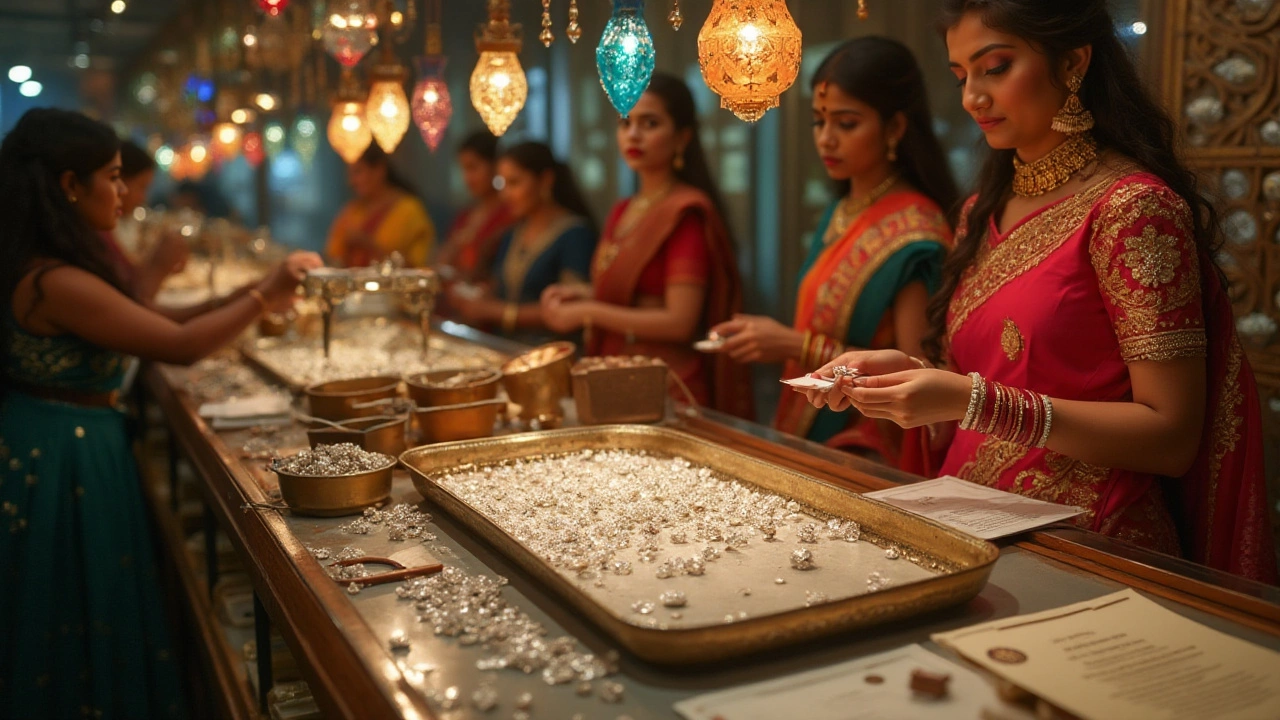India Diamond Rings – Everything You Need to Know
When looking at India diamond rings, fine jewelry crafted with diamonds sourced or set in India, often reflecting local design trends and market pricing. Also called Indian diamond bands, they blend traditional motifs with modern cuts. From classic solitaires to intricate pavé designs, these rings capture a mix of heritage and contemporary style that many shoppers crave. Understanding what makes an Indian diamond ring unique helps you compare options, avoid common pitfalls, and pick a piece that truly fits your taste and budget.
Key Factors Shaping the Market
The price you see on a ring isn’t just about the stone’s size. diamond prices, the cost per carat influenced by cut, color, clarity and market demand. In India, those prices often differ from international rates because of local taxes, import duties, and the sheer volume of diamonds processed in the country. India diamond rings therefore can offer a better value‑for‑carat ratio, especially when you source from reputable domestic sellers.
One major driver behind this value is the Surat diamond market, the world’s largest diamond cutting and polishing hub located in Gujarat. Surat processes roughly 90% of India’s diamonds, turning rough stones into the polished gems you see set in rings. Because of its scale, Surat can keep cutting costs low while maintaining high craftsmanship standards. This means the rings you buy often benefit from that efficiency, translating into competitive prices without compromising quality.
But price alone doesn’t guarantee quality. A reliable diamond certification, an independent grading report from labs like GIA, IGI or HRD, is the gold standard for verifying a stone’s attributes. When a certification is present, you can cross‑check the reported carat weight, cut grade, color, and clarity against the actual stone. In short, buying a ring requires a clear certification to avoid overpaying for sub‑par diamonds.
Beyond the stone, the setting plays a huge role in how a ring looks and feels. Indian designs often feature elaborate milgrain work, temple motifs, or even embedded colored gemstones that add cultural flair. Knowing which setting style matches your lifestyle—whether you need a daily‑wear solitaire or an occasional statement piece—helps narrow down choices quickly.
Now that you’ve got the big picture, the next step is a practical buying guide. First, set a realistic budget and decide the carat range you’re comfortable with. Second, compare at least three reputable retailers, checking for certification, return policy, and after‑sales service. Third, pay attention to the cut grade; a well‑cut diamond can appear larger and more brilliant than a higher‑carat stone with a poorer cut. Finally, consider the resale value—rings with recognized certifications and classic settings tend to retain more of their worth over time.
All of these pieces—pricing dynamics, Surat’s cutting expertise, certification standards, and setting styles—come together to shape what you’ll find in the collection below. Whether you’re hunting for a budget‑friendly sparkle or a lavish heirloom, the articles ahead break down each aspect in detail, giving you the confidence to choose the perfect India diamond ring for your needs.
